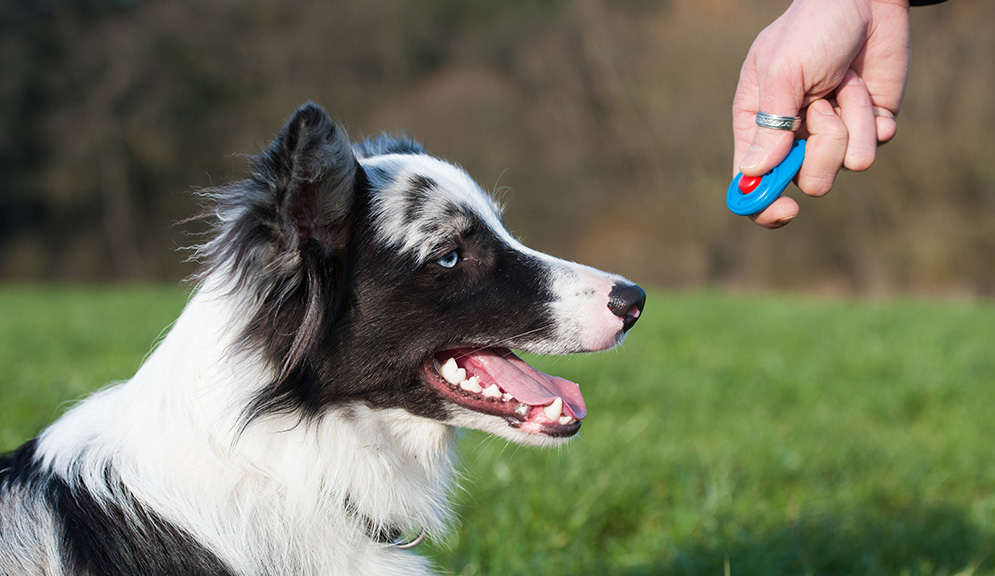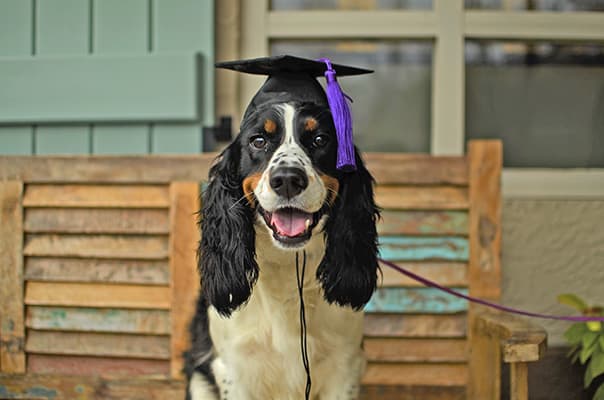Novice's Guide to Successful Dog Training in the house
Successfully training a dog at home needs a nuanced understanding of canine actions and effective communication approaches. Developing clear training goals, making use of high-quality benefits, and preserving uniformity across family participants are important aspects. Incorporating training right into daily regimens can improve both involvement and retention.
Comprehending Canine Behavior
Understanding dog habits is necessary for effective training and fostering a harmonious connection between people and their canine friends - Puppy Training. Canines connect mostly via body language, articulations, and faces, making it critical for proprietors to translate these signals precisely. Recognizing habits such as tail wagging, grumbling, or cowering can offer insights right into a canine's emotion and intents
In addition, comprehending the natural instincts of dogs, such as their pack attitude, helps proprietors establish leadership roles within the home. This is vital for producing a structured environment where pet dogs feel secure and are a lot more responsive to training. Pets are likewise affected by their socialization experiences; very early exposure to numerous settings, individuals, and other pets can considerably shape their habits later in life.
Typical behavior issues, such as hostility, stress and anxiety, or extreme barking, often stem from misconceptions or unmet requirements. Observing and addressing these problems promptly can avoid rise and ensure a positive training experience. By fostering a deep understanding of dog actions, proprietors can tailor their training techniques to fit their canine buddies, inevitably leading to a well-behaved and happy pet dog.

Essential Educating Devices
A fully equipped training space can dramatically improve the effectiveness of pet training at home. Important training devices make certain that both the trainer and the pet dog can take part in efficient sessions that cultivate discovering and bonding.

Buying a sturdy chain and a comfy, well-fitting collar or harness is vital for safety and security and control. These tools assist establish boundaries and ensure the pet dog stays secure during training. Furthermore, a marked training location, devoid of disturbances, help focus for both the pet dog and the trainer.
Educating help such as training pads, cones, or dexterity equipment can also enhance the experience by presenting range and difficulties. Having a note pad or electronic app for tracking progress can be very useful, allowing you to note successes and areas for improvement. Utilizing these essential devices will certainly create a favorable training atmosphere and lay the foundation for efficient understanding.
Developing a Training Regimen
Developing a constant training regimen is vital for reliable pet dog training at home. A well-structured routine not just helps in reinforcing preferred habits but additionally provides your pet with a feeling of protection and predictability. To create a reliable training routine, begin by identifying specific training objectives, such as fundamental commands, chain strolling, or housebreaking.
Pick a designated time every day for training sessions, ideally when your pet is sharp and receptive. Sessions must be brief, approximately 5 to 15 mins, to keep emphasis and prevent tiredness. Consistency in timing and setting will certainly enhance your dog's learning experience.
Incorporate training into everyday tasks to strengthen abilities. For instance, technique commands during walks or nourishment, which incorporates learning right into all-natural regimens. Furthermore, continue to be versatile and change the regular as necessary, fitting your pet dog's power degrees and mood.
Positive Support Techniques

When carrying out favorable support, it is essential to pick rewards that are motivating for your pet. High-value deals with, such as tiny pieces of chicken or cheese, can be specifically effective throughout training sessions. Furthermore, varying the rewards can maintain your dog's interest and interest.
Beginning with simple commands, like "rest" or "remain," and slowly development to much more intricate tasks. Consistency is vital; make sure that all relative use the very same commands and reward systems to prevent complication.
Furthermore, it is essential to remain individual and avoid stress. Pet dogs, like human beings, learn at their very own pace. By fostering a supportive training environment with positive reinforcement, you can improve your canine's understanding experience while strengthening the bond in between you and your furry companion, preparing for effective training end results.
Common Training Difficulties
While educating a pet at home can be a gratifying experience, it commonly features a collection of typical obstacles that can test both perseverance and uniformity. One common concern is interruption. Canines might become quickly sidetracked by noises, movements, and even scents in their environment, making it difficult to maintain their focus throughout training sessions.
Another challenge is variance in commands and support. It can prevent and confuse the dog development if family members make use of different signs or incentives. Establishing a unified technique is necessary for efficient communication.
Furthermore, dogs can experience stress or stress, particularly if they do not understand what is expected of them. This can result in undesirable behaviors, such as chewing or barking.
Finally, the timing of reinforcement is essential. Delayed incentives can decrease the performance of favorable reinforcement, as dogs might fail to connect the actions with the benefit.
Getting over these difficulties needs dedication, clear communication, and a structured training strategy - Puppy Training. Identifying and resolving these common challenges will lead the way for a more pleasurable and effective training experience in the house
Conclusion
In final thought, effective pet training in the house demands a detailed understanding of canine actions and reliable interaction techniques. By developing clear training objectives and utilizing high-grade treats together with positive reinforcement, the training process becomes more rewarding for both the fitness instructor and the canine. Persistence, uniformity, and versatility are necessary elements that help with learning. Ultimately, integrating training right into everyday routines enhances the bond in between canine and owner, making the experience both enjoyable and productive.
Establishing a constant training routine is essential for reliable canine training at home.Positive support strategies are basic to effective canine visit this page training, advertising wanted actions with internet benefits instead than penalty. By promoting a helpful training environment through favorable reinforcement, you can boost your pet's understanding experience while strengthening the bond between you and your hairy friend, laying the foundation for successful training outcomes.
In final thought, effective canine training at home demands a comprehensive understanding of canine behavior and efficient interaction strategies. By establishing clear training goals and using high-grade deals with alongside favorable support, the training procedure ends up being extra fulfilling for both the canine and the trainer.